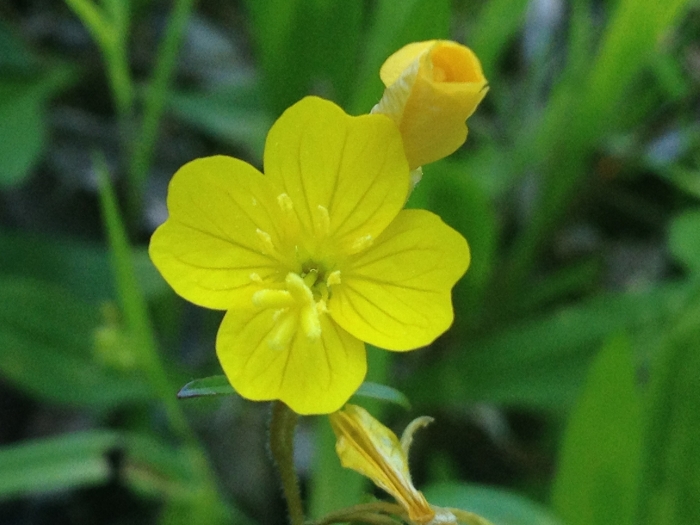Little Evening Primrose
(Oenothera perennis)
Little Evening Primrose (Oenothera perennis)
/
/

Étienne Lacroix-Carignan
Public Domain
Image By:
Étienne Lacroix-Carignan
Recorded By:
Copyright:
Public Domain
Copyright Notice:
Photo by: Étienne Lacroix-Carignan | License Type: Public Domain | License URL: http://creativecommons.org/publicdomain/zero/1.0/ | Rights Holder: Étienne Lacroix-Carignan | Publisher: iNaturalist | Date Created: 2018-06-22T20:23:39Z |









































Estimated Native Range
Summary
Oenothera perennis, commonly known as Little Evening Primrose or Small Sundrops, is a perennial herb native to open woodlands, grassy fields, and along roadsides in the eastern United States and Canada. It typically grows to a height of 1-2 feet (30-60 cm) and spreads 12-18 inches (30-45 cm). This species forms a rosette of lance-shaped leaves, and its bright yellow flowers bloom from late spring to early summer. Each flower, about 1 inch across, has four notched petals with distinct veins radiating from the base, and they are quite showy during their daytime opening. The plant is not known for significant fruit or seed production.
Little Evening Primrose is appreciated for its cheerful yellow flowers and its ability to attract pollinators such as bees and butterflies. It is used in wildflower gardens, borders, and naturalized areas. This plant is relatively low maintenance, tolerating drought once established, and it thrives in well-drained soils. It can be grown from seed and will self-seed in optimal conditions. However, it is not typically aggressive or invasive. Potential problems include root rot in poorly drained soils and susceptibility to rust and other fungal diseases.CC BY-SA 4.0
Little Evening Primrose is appreciated for its cheerful yellow flowers and its ability to attract pollinators such as bees and butterflies. It is used in wildflower gardens, borders, and naturalized areas. This plant is relatively low maintenance, tolerating drought once established, and it thrives in well-drained soils. It can be grown from seed and will self-seed in optimal conditions. However, it is not typically aggressive or invasive. Potential problems include root rot in poorly drained soils and susceptibility to rust and other fungal diseases.CC BY-SA 4.0
Plant Description
- Plant Type: Herb
- Height: 0.5-2 feet
- Width: 0.25-1 feet
- Growth Rate: Moderate
- Flower Color: Yellow
- Flowering Season: Summer
- Leaf Retention: Semi-Deciduous
Growth Requirements
- Sun: Full Sun, Part Shade
- Water: Medium
- Drainage: Medium, Fast
Common Uses
Bee Garden, Bird Garden, Butterfly Garden, Deer Resistant, Drought Tolerant, Fragrant, Groundcover, Hummingbird Garden, Low Maintenance, Rabbit Resistant
Natural Habitat
Open woodlands, grassy fields, and along roadsides
Other Names
Common Names: Little Evening-Primrose, Small Sundrops, Small Evening Primrose, Onagre Pérennante, Onagre Vivace, Dvärgnattljus
Scientific Names: , Oenothera perennis, Oenothera perennis var. perennis, Oenothera pumila, Oenothera pusilla, Oenothera chrysantha, Oenothera gracilis, Oenothera pumila var. rectipilis, Kneiffia perennis, Oenothera perennis var. rectipilis
GBIF Accepted Name: Oenothera perennis L.